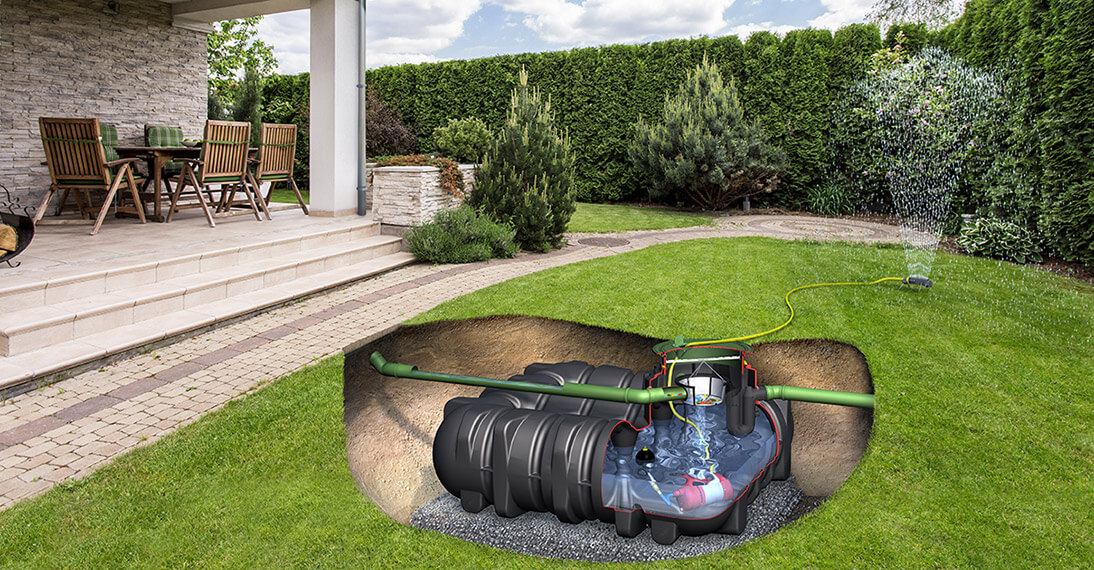Why your plants love rainwater
Turn on the tap and go: like you, many garden owners water their plants with tap water all year round. In the long run, however, this not only damages your wallet, but also your plants. The better alternative regularly falls from the sky for free - and can easily be collected in a barrel or cistern: rainwater.
Last year, an average of 710 liters of rain fell per square meter in Germany. An incredible amount - of which, unfortunately, a large part still ends up unused underground. Just like at the Jäger nursery in Ettenheim, Baden. There, the boss and master gardener Christian Jäger regularly watches as the precious water flows over the roofs of his greenhouses and disappears into the sewer system shortly afterwards. For capacity reasons, he can currently only store a limited amount of rainwater in his GRAF tanks - and therefore has to water some of his plants with well water. "This has a major disadvantage," explains Jäger. "The well water costs money because we buy it from the city - and we need a lot of it."

Even hobby gardeners who rely on tap water know this: in a hot summer, a lot of irrigation water is needed, which can quickly become costly. Collecting rainwater naturally requires investment in a rain barrel or a tank with pipes and a pump. Depending on your requirements, you must determine the most suitable rainwater harvesting solution
The perfect pH value

Well and tap water are of rather poor quality - at least from the plants' point of view. "It is very hard, calcareous and has a relatively high salt content, which increases the pH value in the pot," says Jäger. This causes problems for some plants. Rhododendrons, for example, react very sensitively to excessively calcareous water. Watering with calcareous water leads to calcification of the soil. This means that the pH value rises, which impairs the plants' nutrient uptake. This has a particular effect on our houseplants or plants in pots in general, as the soil is limited here.
Rainwater, on the other hand, causes the pH value in the pot to drop slightly. As a garden owner, however, you don't have to worry about a falling pH value when using rainwater. "Our soils have so many free lime reserves that they easily compensate for this," says Jäger. Adding small amounts of lime or physiologically acidic fertilizer helps maintain the pH balance of the soil when watering houseplants with rainwater.
Unsightly limescale stains
Incidentally, rainwater also scores points from an aesthetic point of view compared to tap water. "When we water plants 'overhead' with our well water, it leaves an unsightly layer of limescale on the leaves," says Jäger - and many allotment gardeners will also be familiar with this problem from their houseplants. "Our customers then either ask if the plants are sick or if we've treated them with something bad."
Unsightly lime stains also occur when we spray our houseplants. The minerals contained, such as lime, are deposited on the leaves as the water evaporates. This results in unsightly white edges or streaks. Although this does not bother your plants, it does look unattractive.
Tip: Alternatives to rainwater for indoor plants
Distilled water is also suitable for smaller quantities of plants. However, this does not contain any other minerals, so additional fertilizer must be added. The more plants you have, the higher the costs.
Sophisticated system
More and more garden owners are now aware of the benefits of rainwater harvesting and collect the water in a rain barrel. At GRAF, we also offer a range of underground rainwater tanks, such as the Carat underground tank or the Platin flat tank. The Platin flat tank scores points with its minimal installation depth and correspondingly low installation costs.




